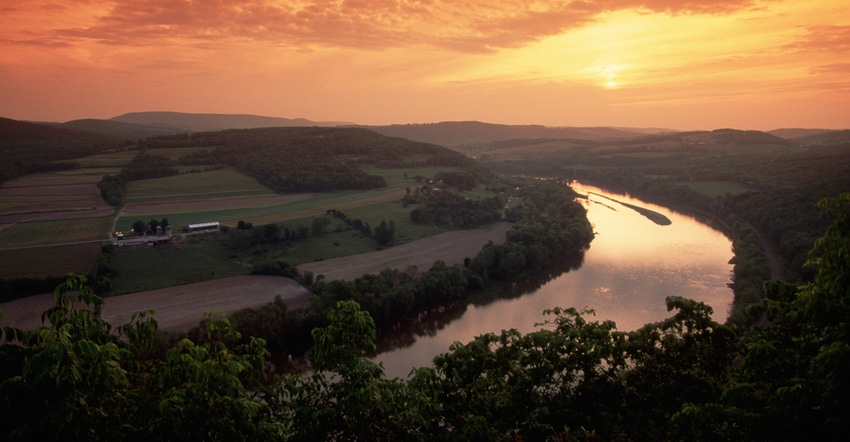
The recently passed Pennsylvania state budget includes a $220 million Clean Streams Fund, described as a first-of-its-kind dedicated funding stream for Chesapeake Bay cleanup efforts.
But how will this money flow to farms? The biggest impact will likely be $154 million for a new Agricultural Conservation Assistance Program (ACAP) that will provide cost-share grants for farmers to install best management practices (BMPs).
This will help the state get into compliance with its nutrient reduction obligations as per the total maximum daily load (TMDL) for the Chesapeake Bay watershed.
The new program will likely be accessed by producers through their local county conservation districts.
Brenda Stambaugh, executive director of the Pennsylvania Association of Conservation Districts, says the money will help pay for projects that farmers have been wanting to put in, but haven’t had money to do so. This runs the gamut from helping convert farming practices to no-till and putting in cover crops to more expensive projects such as barnyard management and manure management systems.
Stambaugh says the money will likely be funneled by the State Conservation Commission down to county conservation districts. Conservation districts normally get funding through line items appropriated by the departments of agriculture and environmental protection, and money is directed to each county based on a formula set by the state.
There isn’t a funding formula for ACAP yet. As the money comes from the state’s portion of federal American Rescue Act funds, Stambaugh points out that the money must be assigned by 2024 and spent by 2026.
Impact on cleanup
The state recently submitted its amended Water Implementation Plan for TMDL that mentions the additional funding. The plan also emphasizes that countywide plans are the focus of the state’s pollutant reduction strategy. But it also noted that counting BMPs farmers put in more than 10 years ago is crucial to include in the bay’s modeling.
In a statement issued last week, the Chesapeake Bay Foundation lauded the state’s new funding effort, but criticized the plan’s continued reliance on counting BMPs that it believes are not proven to reduce nutrient loads or improve water quality.
“As in the previous revision and rejected by EPA, Pennsylvania’s new plan calls for EPA to count clean water practices that Chesapeake Bay Program scientists have not authorized to be counted toward the state’s progress, including those expected from state programs but that require further investigation,” Harry Campbell, the foundation’s director of science policy and advocacy, wrote in a statement.
At a recent press conference announcing the state’s new funding source, Adam Ortiz, the EPA’s Mid-Atlantic Region administrator, said that since April 10, about 10 locations had been visited by EPA inspectors with violations being issued to some farm operators — although he didn’t go into detail into what those violations were.
On the new funding, Ortiz said, “Pennsylvania is still in the woods, but there is a path out for the first time.”
Sen. Scott Martin, who represents Lancaster County, said the funding is a big step forward for helping farmers in need of financial assistance to install BMPs, but he pointed out that funding will be an ongoing, long-term issue.
Hilary Harp Falk, president and CEO of the Chesapeake Bay Foundation, called the funding a “tremendous step forward.”
“Pennsylvania farmers are willing to invest time into clean water, and we believe these investments will give then added financial and technical support to reduce runoff and make farms more sustainable,” she said.
About the Author(s)
You May Also Like






